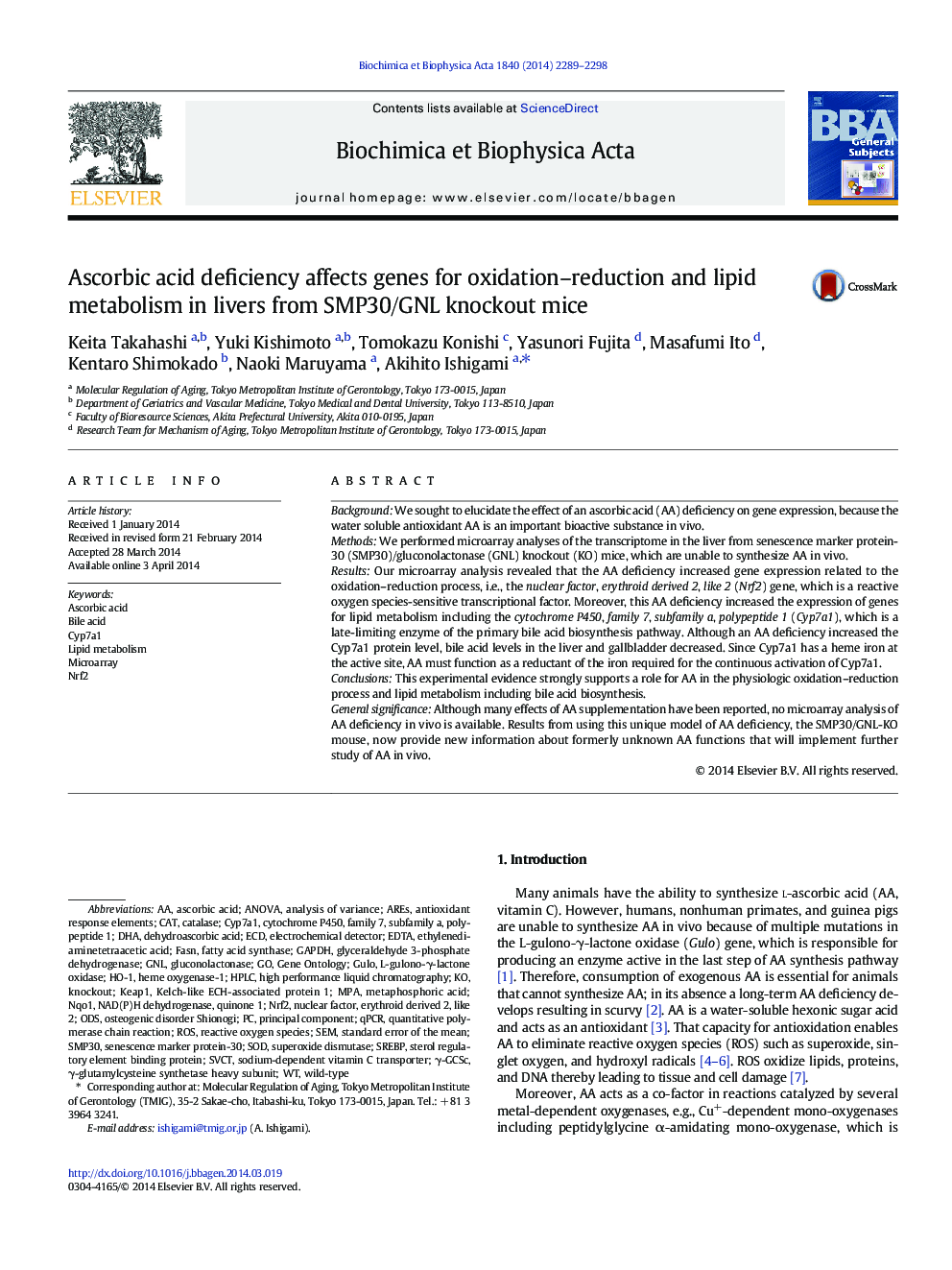| Article ID | Journal | Published Year | Pages | File Type |
|---|---|---|---|---|
| 1947505 | Biochimica et Biophysica Acta (BBA) - General Subjects | 2014 | 10 Pages |
•We performed microarray analysis of genes affected by an ascorbic acid deficiency.•An ascorbic acid deficiency increased genes for oxidation–reduction.•Nrf2 was activated by the ascorbic acid deficiency.•An ascorbic acid deficiency affected lipid metabolism.•Ascorbic acid is an important factor in bile acid biosynthesis.
BackgroundWe sought to elucidate the effect of an ascorbic acid (AA) deficiency on gene expression, because the water soluble antioxidant AA is an important bioactive substance in vivo.MethodsWe performed microarray analyses of the transcriptome in the liver from senescence marker protein-30 (SMP30)/gluconolactonase (GNL) knockout (KO) mice, which are unable to synthesize AA in vivo.ResultsOur microarray analysis revealed that the AA deficiency increased gene expression related to the oxidation–reduction process, i.e., the nuclear factor, erythroid derived 2, like 2 (Nrf2) gene, which is a reactive oxygen species-sensitive transcriptional factor. Moreover, this AA deficiency increased the expression of genes for lipid metabolism including the cytochrome P450, family 7, subfamily a, polypeptide 1 (Cyp7a1), which is a late-limiting enzyme of the primary bile acid biosynthesis pathway. Although an AA deficiency increased the Cyp7a1 protein level, bile acid levels in the liver and gallbladder decreased. Since Cyp7a1 has a heme iron at the active site, AA must function as a reductant of the iron required for the continuous activation of Cyp7a1.ConclusionsThis experimental evidence strongly supports a role for AA in the physiologic oxidation–reduction process and lipid metabolism including bile acid biosynthesis.General significanceAlthough many effects of AA supplementation have been reported, no microarray analysis of AA deficiency in vivo is available. Results from using this unique model of AA deficiency, the SMP30/GNL-KO mouse, now provide new information about formerly unknown AA functions that will implement further study of AA in vivo.
